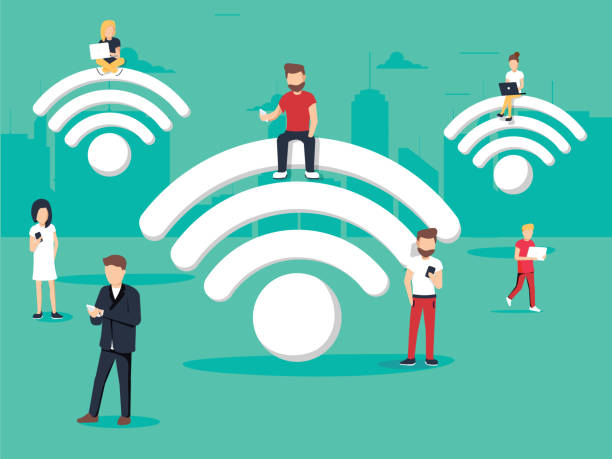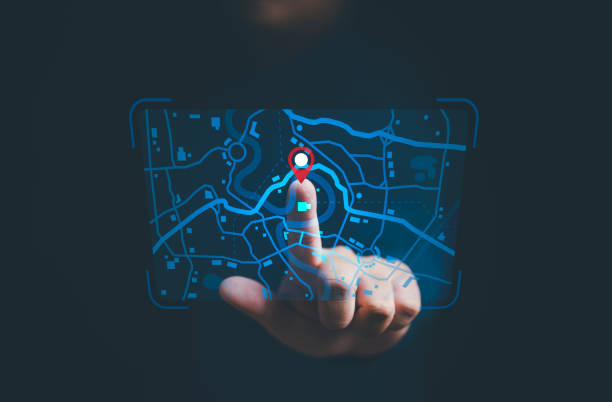In today’s digital age, accessing the internet on the go has become a norm, thanks to the availability of public Wi-Fi hotspots in various locations such as cafes, airports, and shopping malls. While these networks offer convenience, they also pose significant security risks to unsuspecting users. Protecting yourself on public WiFi is paramount to safeguarding your personal information and sensitive data from potential threats such as eavesdropping, malware attacks, and identity theft.
Well, in this guide, we will delve into essential tips and best practices to help you stay secure while using public Wi-Fi networks, ensuring your online privacy remains intact wherever you connect.
Understanding Public Wi-Fi
Public Wi-Fi refers to wireless networks that are accessible to the general public in various locations. These hotspots provide internet connectivity without requiring a wired connection, allowing users to access the internet from their smartphones, laptops, or tablets. Common places where public Wi-Fi is available include coffee shops, restaurants, airports, train stations, and shopping malls.
These networks operate through wireless access points, which transmit data to and from connected devices. However, unlike private networks, public Wi-Fi lacks encryption and stringent security measures, making it vulnerable to various cyber threats.
To learn more about Public Wi-Fi, check our guide.
Security Risks on Public Wi-Fi
Eavesdropping:
Hackers can intercept unencrypted data transmitted over public Wi-Fi networks, including usernames, passwords, and browsing activities. This practice, known as eavesdropping, allows malicious actors to capture sensitive information without the user’s knowledge.
Malware and Phishing Attacks:
Public Wi-Fi networks are breeding grounds for malware and phishing attacks. Cybercriminals can deploy malicious software or create fake websites to deceive users into revealing their login credentials, financial details, or personal information.
Rogue Hotspots:
In some cases, attackers may set up rogue hotspots with legitimate-sounding names to lure unsuspecting users. Once connected to these networks, users unwittingly expose their data to hackers who can monitor or manipulate their online activities.
Man-in-the-Middle (MitM) Attacks:
In MitM attacks, hackers intercept communication between two parties, allowing them to eavesdrop on conversations, steal data, or inject malicious content. Public Wi-Fi networks provide fertile ground for such attacks due to the lack of encryption and authentication.
Unsecured Network Settings:
Public Wi-Fi networks often have lax security settings, leaving them vulnerable to unauthorized access and exploitation. Without proper encryption and authentication protocols in place, attackers can easily infiltrate these networks and compromise user data.
Session Hijacking:
Attackers can hijack active user sessions on public Wi-Fi networks, allowing them to impersonate legitimate users and gain unauthorized access to sensitive accounts and information. This type of attack is particularly common on unencrypted connections where session tokens are transmitted in plaintext.
Evil Twin Attacks:
In Evil Twin attacks, hackers create malicious WiFi hotspots that mimic legitimate networks, tricking users into connecting to them instead. Once connected, users unwittingly expose their data to attackers who can monitor their online activities or launch further attacks.
Data Interception:
Public Wi-Fi networks lack encryption, making it easy for attackers to intercept and manipulate data transmitted between devices and the internet. This opens the door to various cyber threats, including data theft, identity theft, and financial fraud.
Physical Location Tracking:
Public Wi-Fi networks may track users’ physical locations through their device’s MAC address or IP address. This information can be exploited by cybercriminals or used for invasive surveillance purposes without the user’s consent.
Insecure Hotspot Infrastructure:
The infrastructure supporting public Wi-Fi hotspots may be poorly maintained or outdated, making them susceptible to vulnerabilities and exploitation. Attackers can exploit weaknesses in the network infrastructure to gain unauthorized access or launch targeted attacks against users.
Lack of User Awareness:
Many users are unaware of the security risks associated with public WiFi or fail to take adequate precautions to protect their data. This lack of awareness leaves them vulnerable to exploitation and increases the likelihood of falling victim to cyberattacks.
Data Leakage:
Public Wi-Fi networks may leak sensitive information, such as device identifiers, browsing history, and location data, to third parties without the user’s knowledge or consent. This information can be exploited for targeted advertising, surveillance, or cybercriminal activities.
Device Compromise:
Connecting to public Wi-Fi networks exposes devices to potential compromise, including malware infections, unauthorized access, and remote exploitation. Attackers can target vulnerable devices on public networks to steal data, install malicious software, or gain control over the device’s functionality.

Tips to Protect Yourself on Public Wi-Fi
Use a Virtual Private Network (VPN): Employing a VPN encrypts your internet traffic, creating a secure tunnel between your device and the VPN server. This encryption prevents unauthorized access to your data, shielding it from prying eyes on public Wi-Fi networks.
Ensure HTTPS Connections: Whenever possible, opt for websites with HTTPS encryption, which secures the communication between your device and the website’s server. HTTPS ensures that your data remains confidential and integrity is maintained during transmission.
Enable Firewall and Antivirus Software: Activate the firewall and install reputable antivirus software on your device to detect and prevent malicious activities. These security measures serve as an additional layer of defense against malware and other cyber threats.
Avoid Sensitive Transactions: Refrain from conducting sensitive transactions, such as online banking or shopping, while connected to public Wi-Fi. Wait until you’re on a secure network, such as your home or office connection, to perform these activities.
Update Device and Software Regularly: Keep your device’s operating system, applications, and antivirus software up to date with the latest security patches and updates. Regular updates help patch vulnerabilities and enhance the overall security of your device.
| Call 866-861-4084 for Internet Deals |
Tips to Keep Your Devices Safe
Use Strong Passwords:
Set strong, unique passwords for your devices, accounts, and networks to prevent unauthorized access. Avoid using easily guessable passwords and consider using a password manager to securely store and manage your passwords.
Enable Device Lock:
Activate the lock screen or passcode on your devices to prevent unauthorized access if they are lost or stolen. Use biometric authentication, such as fingerprint or facial recognition, for added security.
Install Security Software:
Install reputable antivirus and anti-malware software on your devices to detect and remove malicious threats. Keep the software updated regularly to ensure optimal protection against the latest threats.
Use Encryption:
Enable encryption features, such as device encryption and encrypted messaging apps, to secure your data from unauthorized access. Encryption converts your data into a coded format that can only be deciphered with the correct encryption key.
Backup Your Data:
Regularly back up your important data and files to a secure location, such as cloud storage or an external hard drive. In the event of device loss, theft, or malfunction, you can restore your data from the backup without losing valuable information.
Be Wary of Suspicious Links and Attachments:
Exercise caution when clicking on links or downloading attachments from unknown or suspicious sources, as they may contain malware or phishing attempts. Verify the authenticity of the sender before taking any action.
Use Two-Factor Authentication (2FA):
Enable two-factor authentication for your accounts whenever possible to add an extra layer of security. 2FA requires you to provide a secondary form of verification, such as a code sent to your phone, in addition to your password.
Be Mindful of Public Wi-Fi:
Exercise caution when connecting to public WiFi networks, as they may be unsecured and susceptible to interception by malicious actors. Avoid accessing sensitive information or conducting financial transactions on public WiFi and consider using a virtual private network (VPN) for added security.
Practice Safe Browsing Habits:
Be mindful of the websites you visit and the information you share online. Avoid clicking on suspicious pop-ups or ads, and use secure, encrypted connections (HTTPS) when accessing sensitive websites or entering personal information.
Enable Remote Tracking and Wiping:
Enable remote tracking and wiping features on your devices to locate and remotely erase data in case of loss or theft. This feature can help protect your sensitive information and prevent unauthorized access to your devices.
Secure Your Home Network:
Secure your home Wi-Fi network with a strong password, encryption, and firewall to prevent unauthorized access by outsiders. Regularly check for firmware updates and change default settings to enhance network security.
If you are interested in knowing more, check out our blog on Internet Security.
Educate Yourself:
Stay informed about the latest cybersecurity threats and best practices for keeping your devices safe. Educate yourself and your family members about common scams, phishing tactics, and online safety measures to minimize the risk of falling victim to cyberattacks.
Use Device Tracking Apps:
Consider installing device tracking apps or services that can help you locate, lock, or remotely wipe your device in case it is lost or stolen. These apps provide added peace of mind and security for your mobile devices.

Practice Physical Security:
Keep your devices physically secure by storing them in a safe location when not in use, using laptop locks in public places, and avoiding leaving them unattended in vulnerable areas. Physical security measures are essential for protecting your devices from theft or unauthorized access.
Safe Browsing Practices
Use Secure Networks: Whenever possible, connect to secure Wi-Fi networks that require a password for access. These networks offer better protection against unauthorized users and potential cyber threats.
Disable File Sharing: Disable file sharing and network discovery settings on your device to prevent unauthorized access to your files and folders while connected to public Wi-Fi.
Log Out of Accounts After Use: After accessing websites or online services on public Wi-Fi, remember to log out of your accounts to prevent unauthorized access by subsequent users who may use the same device.
| Call 866-861-4084 for Internet Deals |
Educating Others
Sharing Knowledge with Friends and Family:
Educate your friends and family about the risks associated with public Wi-Fi usage and share tips on how to protect themselves online. Empowering others with knowledge can help them make informed decisions and stay safe online.
Spreading Awareness in Public Places:
Consider raising awareness about public Wi-Fi security by posting informational flyers or conducting workshops in public places. By spreading awareness, you can help others recognize potential threats and take proactive measures to safeguard their privacy.
Conclusion
Protecting yourself on public Wi-Fi requires awareness, vigilance, and proactive security measures. By understanding the risks associated with public networks and implementing best practices such as using a VPN, ensuring HTTPS connections, and updating device software regularly, you can mitigate the likelihood of falling victim to cyber threats. Remember to educate others and promote a culture of cybersecurity awareness to enhance online safety for all users collectively.
FAQs (Frequently Asked Questions)
Is it safe to use public Wi-Fi without any precautions?
While public Wi-Fi can offer convenience, using it without precautions exposes you to various security risks. It’s advisable to implement security measures such as using a VPN and avoiding sensitive transactions on public networks.
What is the role of a VPN in protecting oneself on public Wi-Fi?
A VPN encrypts your internet traffic, making it unreadable to hackers or other malicious entities. It creates a secure tunnel between your device and the VPN server, ensuring that your data remains private and secure, even on public Wi-Fi networks.
How can I identify rogue hotspots on public Wi-Fi?
Rogue hotspots often have names similar to legitimate networks but may lack password protection. Before connecting to a public Wi-Fi network, verify its authenticity with the establishment or use a VPN to secure your connection.
Why is HTTPS encryption important on public Wi-Fi networks?
HTTPS encryption ensures that the data exchanged between your device and websites remains confidential and cannot be intercepted by third parties. It protects against eavesdropping and maintains the integrity of your online communications.
What should I do if I suspect my data has been compromised on public Wi-Fi?
If you suspect that your data has been compromised while using public Wi-Fi, immediately disconnect from the network and change your passwords for affected accounts. Consider contacting the relevant authorities or organizations to report the incident and seek further guidance on protecting your online accounts and personal information.

Meet Jennifer Harper, a wordsmith extraordinaire who has been shaping the digital landscape with her creative prowess for the past two years. Not just a content writer; she is a storyteller who brings the content to life. Her passion for internet trends, memes, and the ever-evolving world of entertainment is evident in every piece she creates. Jennifer doesn’t just follow trends; she sets them.